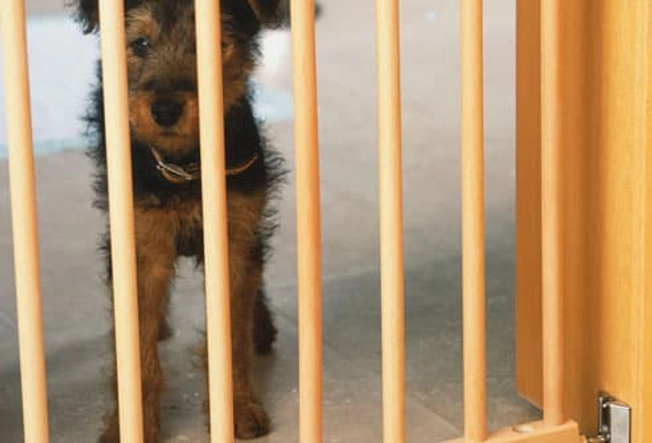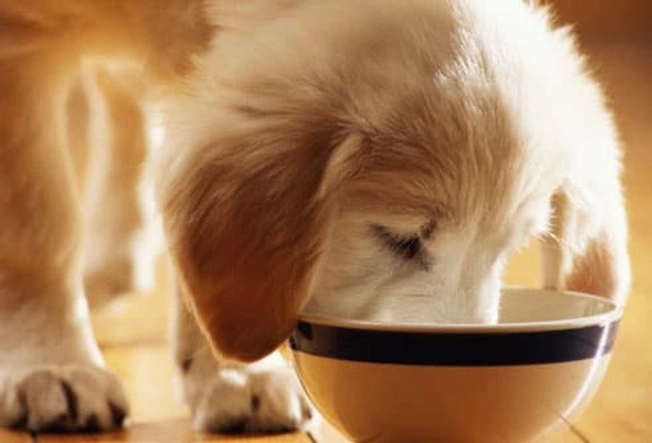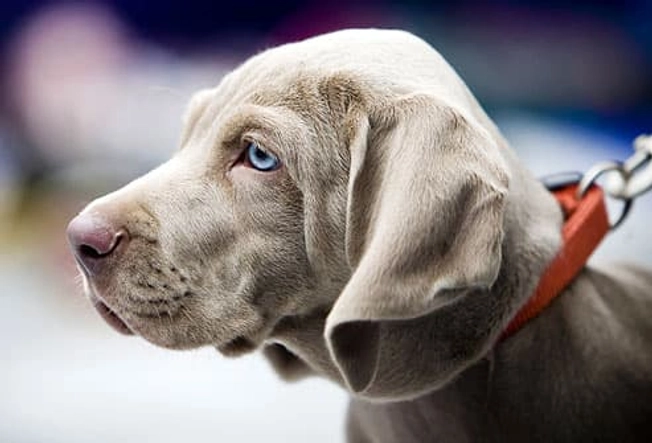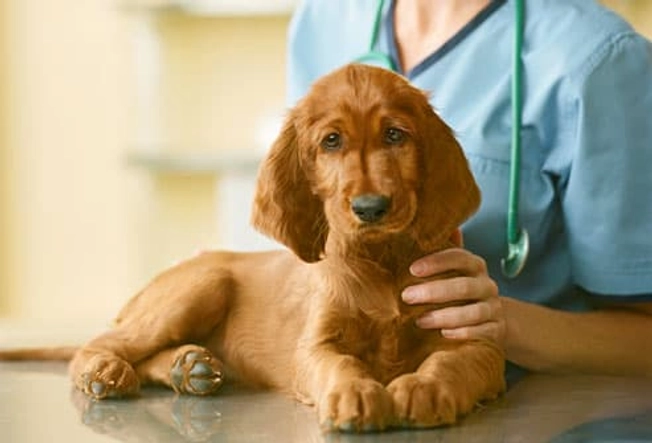Taking Care of Puppy


Why Do You Want a Puppy?
Before you get a puppy, ask yourself a few questions. Why do you want a dog? Will you have the time, space, and money to care for and play with your pup? Which breed do you want? Know the answers before you start looking because once you look, you probably are going to bring home a puppy!

Where to Get Your Puppy
You have lots of options when choosing a puppy. Because there are so many homeless pets, it's great to adopt from a shelter, rescue group, or the pound. If you decide to use a breeder, the American Society for the Prevention of Cruelty to Animals (ASPCA) says to look for a small-scale breeder who never sells to dealers or pet shops. Visit the breeder's home and kennel and meet the mother or relatives of your dog.

Get Ready for Your Puppy
You'll need a few things before you bring home your new pup:
- Puppy food
- Leash and collar with tags that include your phone number and your vet's
- Water and food bowls
- Dog bed
- Grooming brushes
- Folding gate or crate to keep your puppy in one area
- Chew toys

Puppy-Proof Your House
Like babies, puppies explore with their mouths. To keep them safe, you'll need to do a few things before bringing your puppy home.
- Move breakables and electrical cords from doggy level.
- Close low windows.
- Lock away cleaning supplies, motor oil and antifreeze, and medications.
- Get a securely covered garbage can for trash.

Choose Puppy Food
Puppies need food specially designed for their smaller bodies. That's because a growing puppy needs more protein and calories than an adult dog. The food is also easier on a puppy's smaller mouth and weaker jaw. Don't forget that puppies also need plenty of fresh, clean water.

How Much Food Does Puppy Need?
Dogs will eat a lot if the food is available. That's why you shouldn't feed your puppy buffet-style. Plus it's good to watch what your pup eats so you can keep track of their health. How much food they need depends on their size, age, and health. Ask your vet for advice on how much food to give your puppy.

Use Dog Beds and Maybe Crates
Puppies may sleep from 14 to 20 hours a day, so keep your pup comfy while they nap. For bonding, many experts say your puppy should sleep in your bedroom at first, whether in their own bed or a crate. If you use a crate, use it only for sleeping, housebreaking, and travel. Dogs aren't meant to live in crates, so don't overuse it by closing your pet in all the time. But do leave the door open. Lots of dogs see the crate as a safe place and find comfort in being able to go in and out at will.

Inside or Outside?
Dogs are happiest when they're with their pack -- which might be you. If you keep your dog outdoors often, always make time for daily walks and play. Keep your dog safe with a fenced yard. Be sure it has a covered, dry, draft-free spot to keep them warm, and a shady spot to keep them cool. Make sure they have plenty of fresh water.

Bringing Your Puppy Home
Your puppy's first days in their new home are a big adjustment, so give them lots of loving attention. Play with them often. Bring their bed or crate into your bedroom at night so they can be close to you. Soon after they settle in, schedule their first vet visit. Your vet can answer any questions you have and will make sure your new pet has no health problems.

Housebreak Your Puppy
There are two signs your pup needs to potty. They'll sniff the ground to find a good spot, or will race around wildly. When you see them act this way, pick your puppy up and place them outside. After they have peed in the right place, praise them. Puppies relieve themselves every few hours, so expect a few accidents. You can train them to use potty pads inside, too -- just make sure you’ll be OK with them using them for good. Keep them in the same spot if you go this route.

Take Training Classes
Even if you can teach your puppy yourself, you might want to take your puppy to obedience classes. They'll get to be around other dogs and will have to listen while there's a lot going on. Plus, it will nudge you to do your homework and keep working with them. With a little time, kindness, and patience, you can teach your rough-and-tumble puppy better behavior.

Play With Your Puppy
Playing is fun! Spend time every day playing with your pup because it helps them in many ways. They get rid of energy, work on coordination, and bond with you. When you play, use toys. Don't use your puppy's leash, your hands, or anything else, or they'll get the wrong idea.

Take a Walk
Even if your puppy has a great yard, you'll need to take them for walks. Walks give dogs physical and mental exercise. It lets them interact with other dogs they meet along the way. Plus it lets them leave scent markings, which dogs like to do. Try to get at least 60 minutes a day, broken into two to four walks. And make sure your pet is properly vaccinated to avoid picking up an illness while out and about.

Keep Kids and Puppies Safe
As much as kids and dogs love to play together, a puppy is still learning the ropes and may play roughly. There's also the chance that rowdy kids could play too hard with their pup. Watch puppies and kids at all times so they both stay safe.

Care for Your Puppy's Coat and Claws
Brush your pup's coat daily. It will help them get used to grooming. Talk to your vet about the right brush for your dog's breed. Keep their nails short, as too-long nails can stress a dog's wrist joints as well as hurt people and furniture. Trim nail tips weekly starting when your pup is young so they'll be OK with clipping. Your vet can show you how.

Watch the Table Scraps
It's a bad idea to feed your puppy from your plate. Begging is a hard habit to break! More important, some foods can be toxic to dogs, including grapes, raisins, alcohol, garlic, onions, avocados, salt, and chocolate. Call the Animal Poison Control Center at (888) 426-4435 or your vet right away if you think your pup has eaten something dangerous.

Chocolate and Dogs
Dogs have a hard time breaking down one of the key parts of chocolate. Baking chocolate is the most dangerous type of chocolate for your dog. Though a little bit of white or milk chocolate might not hurt, dogs tend to eat whatever food is around. So remove temptation and keep chocolatey things away from your puppy or dog. Call the Animal Poison Control Center at (888) 426-4435 or your vet right away to see if your puppy needs medical attention.

Watch Plants and Your Puppy
Puppies like to chew on everything, including yard and house plants. Some plants -- including lily of the valley, oleander, azalea, yew, foxglove, rhododendron, rhubarb leaves, and shamrock -- are risky for dogs. If you think your puppy has eaten a poisonous plant, call your vet right away or the Animal Poison Control Center at (888) 426-4435.

6-9 Weeks Old: Time for Vaccines
Vaccinations can help your puppy stay healthy. At 6-9 weeks it's time to get them vaccinated against distemper, parainfluenza, canine hepatitis, and parvovirus. At 12-16 weeks it's time to get them rabies shot. Other vaccine choices depend on your puppy's risks, so talk to your vet for advice.

Fight Fleas
It takes just one flea to start the flea cycle in your home. Signs your puppy may have fleas include flea "dirt" (tiny black flea droppings), mild redness, severe scratching, and skin infections. To fight fleas, ask your vet for flea control that's safe for puppies. Treat all pets in the house for fleas, not just the one that may have them.

Get Rid of Puppy's Parasites
Your puppy will probably need deworming medication at their first vet visit. This is a good idea for their and your health since some dog parasites, like roundworms and hookworms, can also pass to people. Nearly all puppies have roundworms and hookworms (magnified here). Intestinal parasites are potentially deadly to your pup if untreated.

16-24 Weeks Old: Spay or Neuter
More than 6 million dogs and cats find their way into shelters every year. That's why it's a great idea to spay or neuter your puppy. Spaying can be done as early as 2 months old, but most vets wait until age 4 to 6 months. If cost is a problem, call your local humane society or shelter. Or call (800) 248-SPAY to find a low-cost spay program near you.

How to Tell When Your Puppy Is Sick
Dogs often won't show it when they're feeling bad. They do their best to stay social when their owners are around. You may notice some common signs of illness in puppies and dogs, such as not eating, eating less, vomiting, coughing, sneezing, fever, diarrhea, or sleeping more. If you see any of these signs, call your vet.

How to Pick a Vet
Ask friends for recommendations. Once you have a few names, visit each clinic. Pick one that's well-managed and looks and smells clean. The vet should listen to you and answer all your questions. Is the staff friendly? Just as with your own doctor, be sure you feel comfortable with the vet you choose.

Enjoy the Journey!
Puppies don't stay little for long! It's a special time that you'll treasure long after your puppy grows up. So make every day count for you and your little one with plenty of love, appropriate discipline, and play!